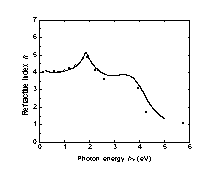
(Adachi [1989]).
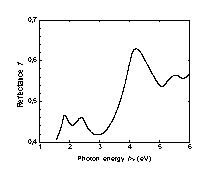
(Aspnes and Studna [1983]).
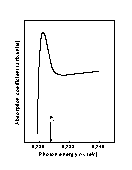
(Kanskaya et al. [1979]).

| Infrared refractive index | 4.0 |
| Radiative recombination coefficient | 5·10-11 cm3s-1 |
 |
Refractive index n versus photon energy, 300 K. (Adachi [1989]). |
 |
Normal incidence reflectivity versus photon energy, 300 K. (Aspnes and Studna [1983]). |
 |
Absorption coefficient near the intrinsic absorption edge, T = 2K (Kanskaya et al. [1979]). |
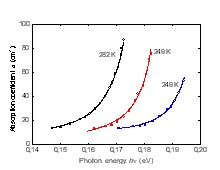 |
Absorption coefficient near the intrinsic absorption edge for different temperatures (Dumke [1957]). |
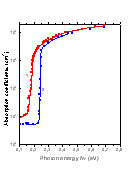 |
Absorption edge of pure InSb.
T (K): 1. 298; 2. 5K; (Johnson [1967]), (Gobeli and Fan [1956]). |
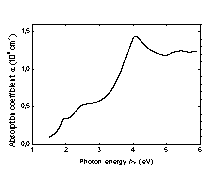 |
Absorption coefficient versus photon energy, T = 300 K. (Aspnes and Studna [1983]). |
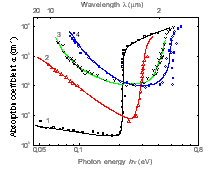 |
Absorption coefficient versus photon energy at different doping levels, n-InSb, T = 130 K no (cm-3): 1. 6.6·1013; 2. 7.5·1017; 3. 2.6·1018; 4. 6·1018; (Ukhanov [1977]). |
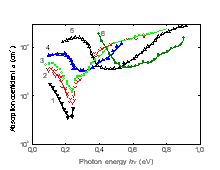 |
Absorption coefficient versus photon energy at different doping levels, p-InSb, T = 5K. po (cm-3): 1. 5.5·1017; 2. 9·1017; 3. 1.6·1018; 4. 2.6·1018; 5. 9.4·1018; 6. 2·1019; (Gobeli and Fan [1960]). |